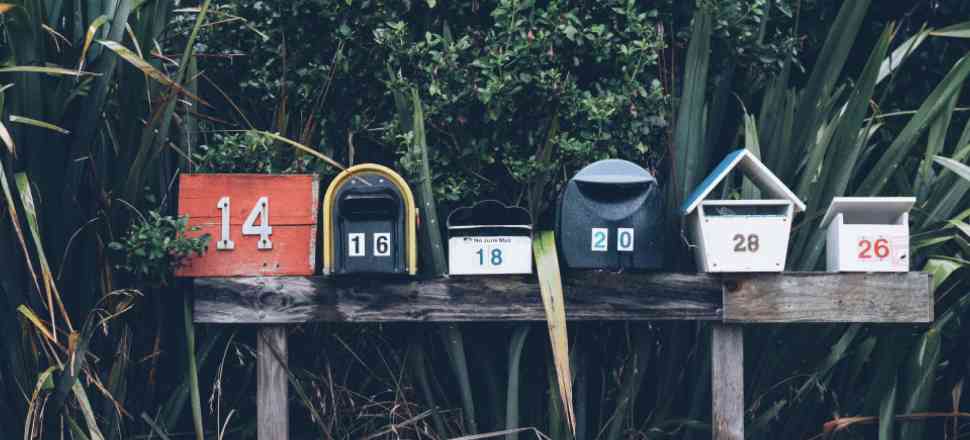How connected to your neighbors do you feel?
When the religious authorities asked Jesus to reduce everything in the Bible into one command, he answered with two. The first is to love God with everything you have. The second, Jesus said, is to love your neighbor as yourself.
What if he meant that we should love our actual neighbors? You know, the people who live right next door.
Imagine if we all took those great commandments seriously by learning to be in relationship with our literal neighbors.
Picture a city where every neighborhood has a few families giving themselves wholeheartedly to loving God and loving others. Imagine streets where someone believes what Jesus said — and acts on it.
That idea can become a reality. But it takes focused effort.
Maybe you’re the kind of person who finds making resolutions motivational. Maybe you’re not. Either way, we hope you’re ready to learn how to be a great neighbor, the kind Jesus spoke about.
So what does that mean?
Are you giving digital neighbors first place?
We’ve all experienced social events where people stood around looking at their smartphones. Once upon a time they might have been talking to each other.
But this is not about harking back to some bygone era. Some people describe this as their way of connecting with friends. And of course it’s possible to apply Jesus’ two great commandments in digital ways. Otherwise you would not be using or investigating MissionHub — or reading this blog.
Connecting with friends online is a good thing. When physical distance makes it impossible to grab a coffee with someone, you meet in a digital space.
But imagine a neighborhood full of people choosing to focus only on their digital neighbors. What would that be like? And more importantly, would you even want to live there?
That would be a block full of people more likely to know what someone on another continent watched on TV last night than to know a neighbor just lost a job or suffered a heart attack.
Choosing to focus primarily on your digital neighbors might be a sign that you’re intimidated by your physical ones. Perhaps you’re scared of being rejected by them.
Jesus wants us to make the most of technology to live out the mission he gave us. So here are two ways we can harness technology more effectively in our task of being great neighbors.
- Use social media to get to know your physical neighbors better. If your street does not have a community group for sharing news or information about recycling, consider starting one.
- Be specific about which of your digital neighbors you want to focus on building deeper relationships with. No one can connect in a meaningful way with 1,000 Facebook friends. Choose 3–5 you want to keep up with, talk to and strive to see offline this year.
You want good relationships with your neighbors, right? That will not happen if the only people who know what’s happening in your life see it on a screen. It’s too easy for those people to scroll on.
Re-imagining your neighborhood
Becoming good neighbors is part of becoming who God intends us to be. This is how our communities become the places God intends them to be.
So choose some words or a phrase you want to describe your neighborhood this time next year. For instance, “a safe community where my children grow into the adults I want them to be.”
How can you invest in your neighbors in a way that makes your chosen words more likely to become reality?
We’re not just talking about every neighborhood being safe and groomed and full of people following Jesus. That does not happen in a year.
We’re dreaming of more streets and city blocks where people know what’s happening in each other’s lives. When someone is going through a painful life situation, a neighbor knows about it and responds in some way.
It means the people on a street know more about each other than whatever they learned in their first, five-minute exchange at the end of a driveway.
A simple plan to learn the art of neighboring
The plan we’re describing takes time. That’s because building authentic and meaningful relationships with anyone takes time. But this plan works and it will not overwhelm you in month one.
You’ll know you have a lot in common with some neighbors and less with others. This is about finding meaningful ways to love them all.
Here’s what a few of us did in our neighborhoods:
- We created a simple visual tool so we could focus on getting to know the people living right beside us. You can print it out and slowly complete it. Or just use it as a reference point for your year of living neighborly.
- Begin by imagining the middle box is your house. The others are the eight homes closest to yours.
- Next, you want to find out and write down the names of the people living in each home. Remembering people’s names is important for building relationships. We’ve seen people use a community Facebook group to put out a call for the names of who lives where. Those who responded felt safer on the streets and had a greater sense of community.
- Now below the names in each box write down some relevant information about each person. We mean information you’ve gathered from actually speaking to a neighbor, even if that was initially via social media. For instance, how did that neighbor come to live on your street? We do not mean what car they drive, because you could know that without ever engaging with that neighbor personally.
- Finally, write down some more in-depth information you could only know after meaningful conversations with your neighbors. What are their ambitions in terms of a career or starting a family? How would they describe their spiritual beliefs? Is there something in their life causing them particular concern right now?
Your picture of your neighbors will not be completed in a month. But in a year you’ll be amazed at how you’ve steadily filled out your picture of who you live beside.
MissionHub helps you by breaking all this down into individual steps of faith. So maybe one month you create a step which involves gathering the names of your eight closest neighbors.
Then you set yourself another task to have a deeper conversation with a different neighbor each week. If it does not happen, you have not failed. You just need to stay focused on what you want to see God do through you in your neighborhood.
We’ve tested this plan and seen it work. Now it’s your turn.
If you do not like our plan — create your own
If you’re reading this post and hear us describing the way you already live and interact with your neighbors — fantastic. Maybe you know someone you can share this post with to encourage them to join you in what you’re doing.
Either way, MissionHub is designed to help you achieve the goal of seeing your neighborhood transformed — relationship by relationship.
Here are three more ideas for planning to be a good neighbor the way Jesus intended:
- List 12 steps of faith you want to take this year with your neighbors.
- Choose one step you want to take each month with any of your neighbors.
- Create a monthly step of faith in MissionHub connected to neighboring.
Your step of faith could be a conversation you want to have, a way you want to serve someone or a meal you plan to invite someone to.
The point is that your neighborhood is crying out for someone like you. That’s why God housed you there. The people living beside you need you in their life — and vice versa.
So here is an invitation from MissionHub. Dedicate a year to learning the art of neighboring, and tell us what happens.
Maybe you’ll become the neighbor others can trust with both the important and less important details of their life. Your neighborhood might start feeling like a different place. Or maybe you’ll see more than that.
What if you see God work — right on your doorstep — and know you’re a part of it?
Did you find this article helpful?
Try: Befriending your neighbor is a step of faith
Have you downloaded the MissionHub app yet? Remember, every person matters, every step of faith counts.
Note to the reader: Some of the content in this blog post was adapted with permission from the book “The Art of Neighboring” by Jay Pathak and Dave Runyon.
Photo by Mathyas Kurmann


